
The color of points in GeoGebra
GeoGebra's visual representation is undeniably one of its most compelling features. Within this visual framework, the use of color isn't merely decorative; it's instrumental, guiding users seamlessly through the maze of geometric and algebraic constructs.
Let's dive deeper into the default color palette GeoGebra employs for its points. Remember, while there's a standard color scheme, the platform offers flexibility, allowing you to tweak a point's hue at your discretion.
GeoGebra's color choices for points aren't arbitrary. Each hue corresponds to a specific function or characteristic of the point. Here's a breakdown:
- Blue Points
Think of blue points as the free spirits of the GeoGebra world. They can be dragged, repositioned, and adjusted without any limitations. They're particularly useful during the preliminary stages of a geometric sketch when the final layout is still up in the air.
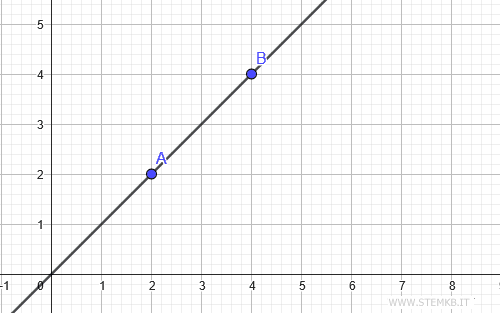
Now, not all blue points are entirely free. Some, especially those in shades of light blue, might be anchored to specific objects, such as a line or circle. Their movement, in such cases, is contingent upon the object they're attached to. These tethered points are indispensable when you're exploring geometric properties that are subject to certain constraints.
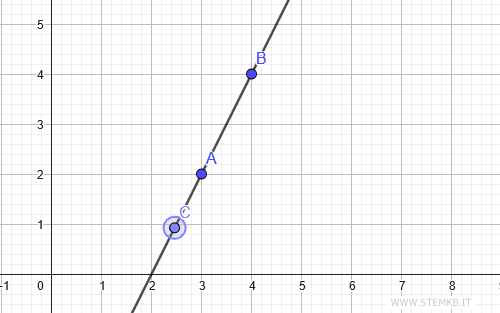
- Gray or Black Points
Gray or black points are the constants. They remain steadfast and immovable. Their positioning is typically determined by their attachment to two or more objects. Take, for instance, the intersection point (E) between two lines. Its location is inherently defined by the relationship between these lines. While you can't move it directly, adjusting the objects it's linked to can indirectly alter its position. These points are essential when you're delving into intersections or points of tangency.

GeoGebra's color choices are meticulously curated, not just for visual appeal but for pedagogical precision. They act as intuitive markers, helping users quickly grasp the functionality of each point.
So, when you're navigating GeoGebra, let the colors be your guide. They're more than just shades; they're signposts.
Customizing Point Colors in GeoGebra
GeoGebra's flexibility extends to color customization. Here's a step-by-step guide to adjusting a point's hue:
Select the point you intend to modify.
On the top toolbar, you'll find a color-change shortcut.
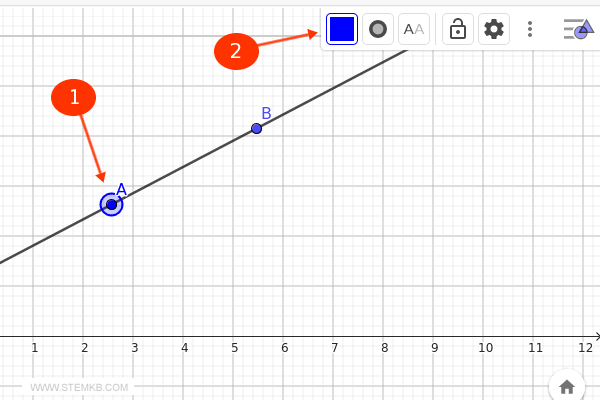
If it's not immediately visible, simply right-click on the point.
From the dropdown, opt for 'Settings'
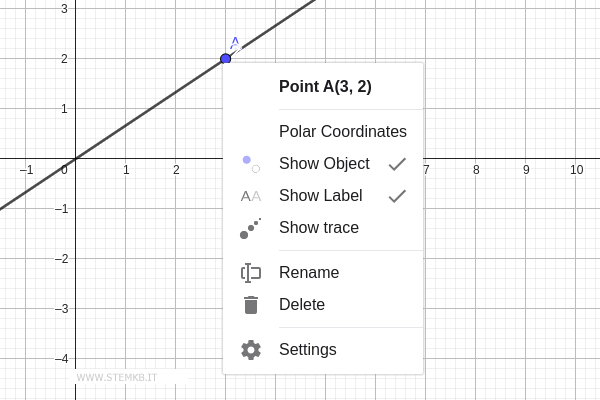
Navigate to the 'Color' tab.
From the palette, choose your desired shade.
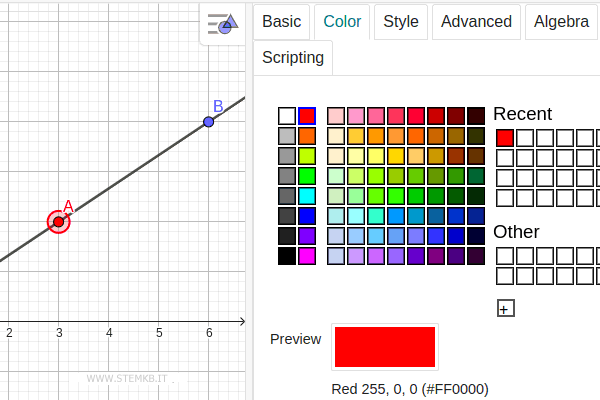
With these steps, you can tailor the color of any element on the canvas, allowing for a personalized GeoGebra experience.

